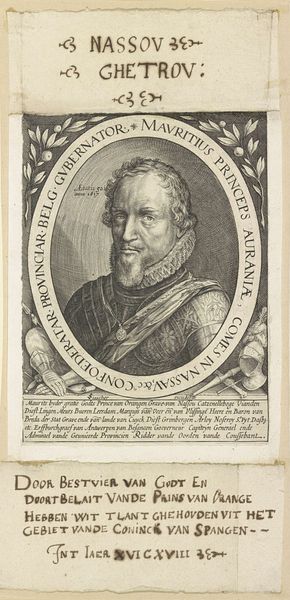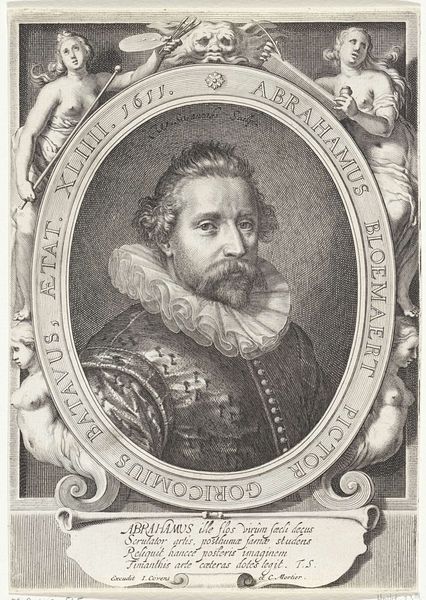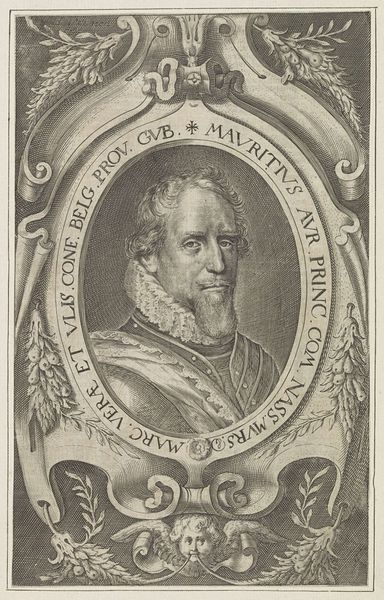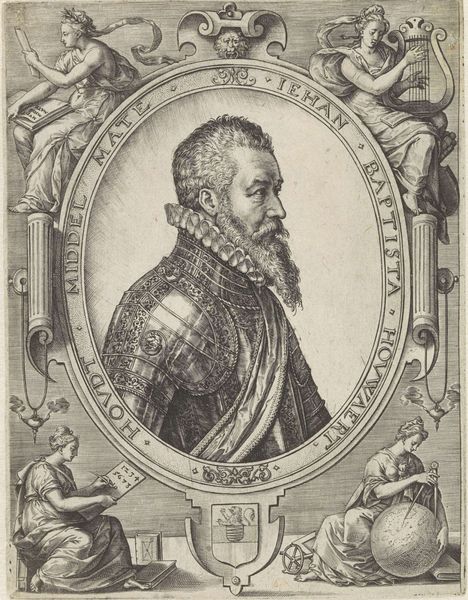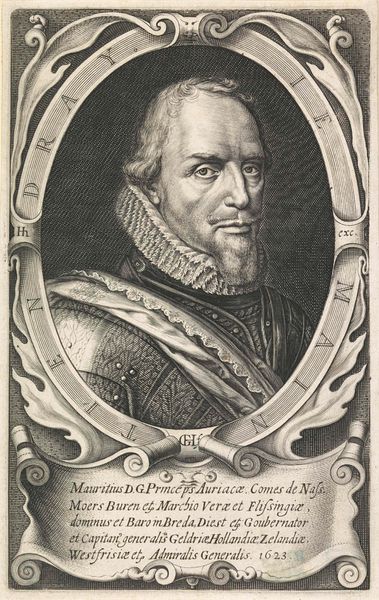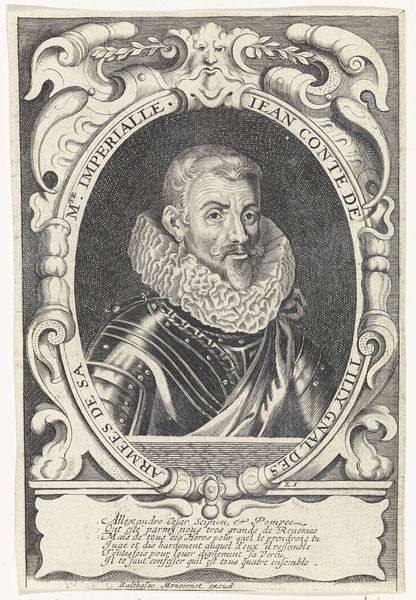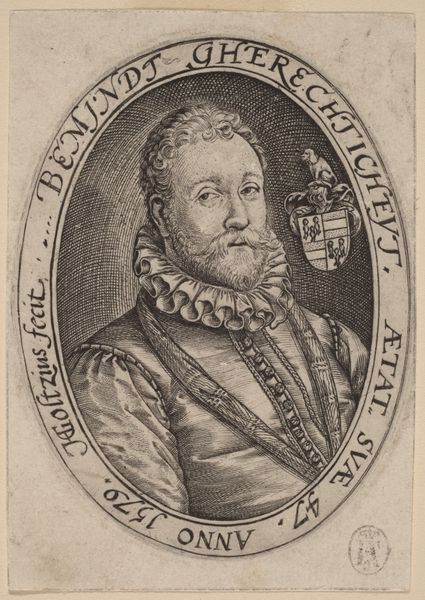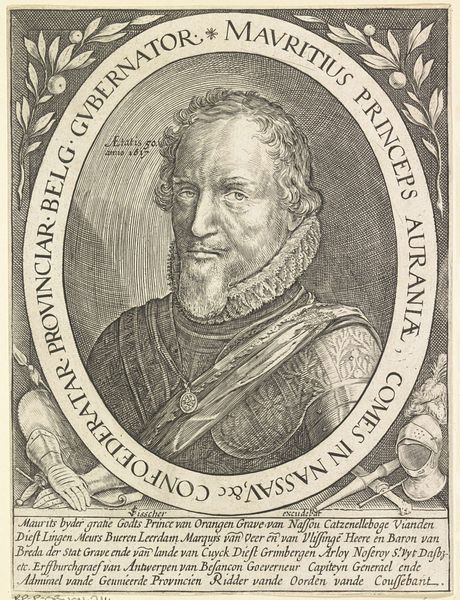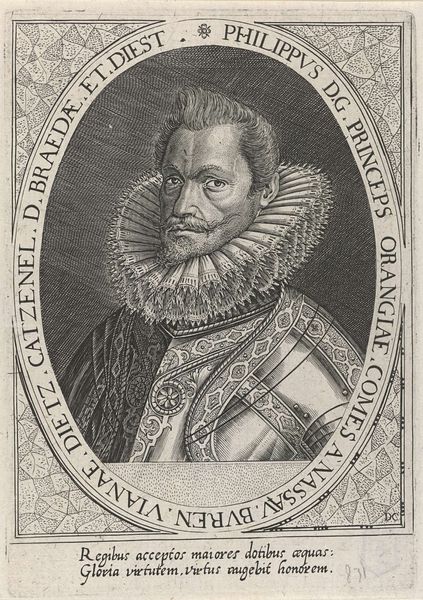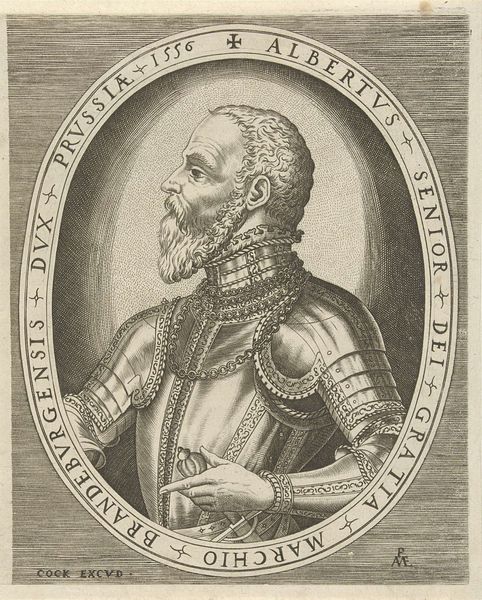
print, engraving
#
portrait
#
aged paper
#
baroque
# print
#
old engraving style
#
pen work
#
history-painting
#
golden font
#
engraving
Dimensions: height 177 mm, width 133 mm
Copyright: Rijks Museum: Open Domain
Editor: Here we have a 17th-century print, "Portret van Maurits, prins van Oranje," artist unknown, from the Rijksmuseum collection. I'm immediately struck by the intricate linework of the engraving and the somewhat severe expression on Prince Maurits' face. How would you interpret this work? Curator: The graphic qualities dominate here. Observe the contrasting textures created through line: the dense hatching that defines the face against the relatively spare use of line in the oval frame. Consider how this contrast contributes to the visual hierarchy, emphasizing the Prince’s stern gaze and monumentalizing him in a way. Are you perceiving the lines forming his gaze? Editor: Yes, the eyes are definitely the focal point. They seem quite direct. Curator: Precisely. The directionality created by these lines—his gaze, the lines emphasizing the planes of his face—serves to project an image of power and resolve outward, directly engaging the viewer. Note, too, how the framing devices and their textures further contribute to a structured, geometric composition. The very structure evokes ideas of control and precision in portraying a royal figure. What are your thoughts on that compositional effect? Editor: I hadn't thought about it that way, but I see what you mean. The geometric structure really reinforces the sense of order and authority. Curator: Indeed. Every element contributes to the creation of a controlled, imposing image that prioritizes power dynamics, as a presentation rather than portrait. Editor: I learned a lot about interpreting how line, texture and even gaze direction create an effect. Curator: Indeed. And remember, artworks can be seen through attention to line, form, and construction, to unveil core structural elements.
Comments
No comments
Be the first to comment and join the conversation on the ultimate creative platform.
